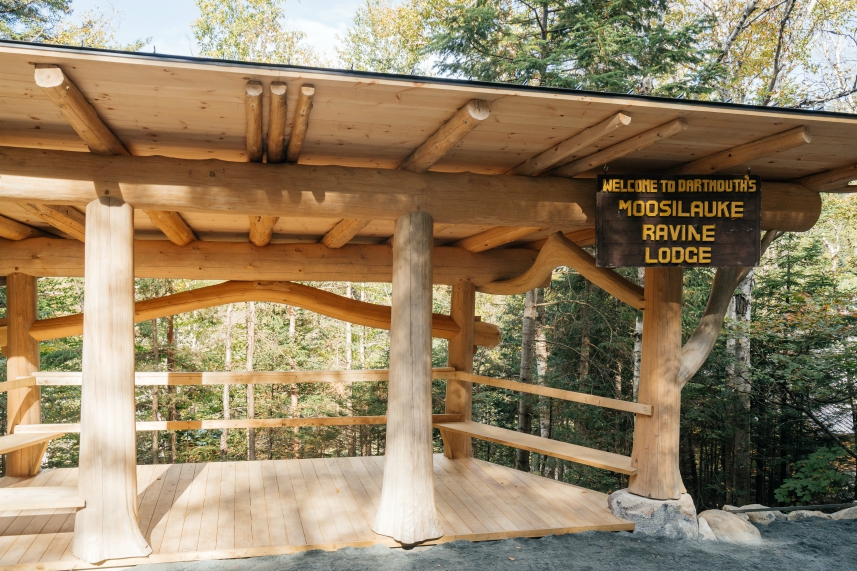Starting a Capital Project
The successful delivery of capital projects requires the consensus agreement of an informed administrative team. When first considering a new project, contact the professionals in Planning, Design & Construction to walk you through the early phases of program development, planning and feasibility.
Criteria to prioritize and approve capital projects
Dartmouth’s senior leadership prioritizes and approves individual projects based on the extent to which they meet the following criteria:
- Advances excellence in the academic mission
- Addresses compliance issues such as life safety, regulatory, health, and other safety concerns
- Has a broad institutional impact
- Results in cost-savings and/or efficiency gains
Process to initiate and approve projects: the Capital Budget
All anticipated work or expenditures that meet the definition of a capital project must be initiated and approved through the annual capital budget process, culminating in Trustee approval at their annual March meeting. Following is a summary of the capital budget process.
October: Proposals for each capital project are submitted by the sponsoring division/school through the Budget SharePoint website. Proposals must meet the annual submittal deadline to be approved in the next fiscal year’s capital budget. The deadline is listed in the SharePoint calendar. Each proposal must have a prioritized ranking within the division’s or school’s capital budget proposal and must be approved by the VP or Dean.
November: A Campus Services team reviews each proposal to verify that issues of cost, space utilization, schedule, swing space, infrastructure, permitting and other relevant factors have been properly addressed. PDC informs the project sponsor if further information is required, with a resubmission deadline of December 1.
The AVP of Planning, Design & Construction works with the project sponsor to resolve any issues with a project submittal; the sponsor is then required to resubmit the proposal through SharePoint by December 1. The AVP-PDC indicates final approval of the SharePoint documents.
December: Senior leaders, the Finance team and Campus Services team meet with each division/school to review their capital budget proposals.
January: Senior leaders review capital project proposals and develop a list of projects to include in the capital budget. Departments are informed by the Budget Office of the tentative status of their proposals.
February: The Finance and Master Planning & Facilities Trustee committees preview the capital budget at an off-cycle meeting.
March: The Board of Trustees votes on the capital budget. Funding for centrally-funded, Trustee-approved capital projects is released for projects on July 1. Department-funded projects may begin at any time following Trustee approval of the capital budget.
Developing project budgets and fundraising targets
Each capital project requires a financial plan to include the project cost, operating and renewal costs, and funding/financing sources. At each project phase, the financial plan and funding sources will be reviewed, adjusted and approved as needed. The Finance Office is responsible for maintaining an overall financial plan with inputs from Campus Services and Advancement. The components of a capital project financial plan include the following.
Total Project Cost
The Total Project Cost includes any and all expenses to plan, design and build a construction
project. Typical components are as follows:
- Design, engineering, and consulting fees
- Permits and legal expenses
- Mitigation expenses based on the principle that projects are responsible for replacement or repair of any and all impacts on existing facilities or programs
- Enabling costs (e.g. utility or infrastructure, swing space, etc.)
- Cost of construction
- Owner's expenses, including FF&E (furnishings, fixtures and equipment)
- Project management expenses
- Capitalized interest if there is college debt, including debt for gift payment schedules
Project budgets do not include equipment associated with the operations of a department, office, or service function unless such equipment is connected to the building infrastructure or systems. Examples include scientific equipment (e.g. microscopes), tools (e.g. a table saw or 3D printer), computers, service equipment (dining equipment, maintenance equipment), etc.
Annual Operating & Maintenance (O&M) Costs
Annual O&M costs are defined as the expenses necessary to operate and maintain the
building. Typical components are as follows:
- Utility services including heat, air conditioning, electricity, data, telephone, etc.
- Normal maintenance of mechanical, plumbing and electrical equipment, and of building assemblies such as flooring, windows, etc.
- Custodial services and grounds maintenance services
- Insurance, taxes
Total Project Cost
The capital renewal reserve is the funding source for replacement of major building
systems or landscape components. Typical components are as follows:
- Roof, window, door replacement
- Replacement of major mechanical or electrical equipment
Funding / Financing Sources
The Finance Office has overall responsibility to identify and confirm funding and/or
financing sources for any given capital project. For gift-funded projects the Advancement
team will establish the “fundraising target”, which becomes a critical component of
the milestone approvals process (refer to Capital Project Milestones).
